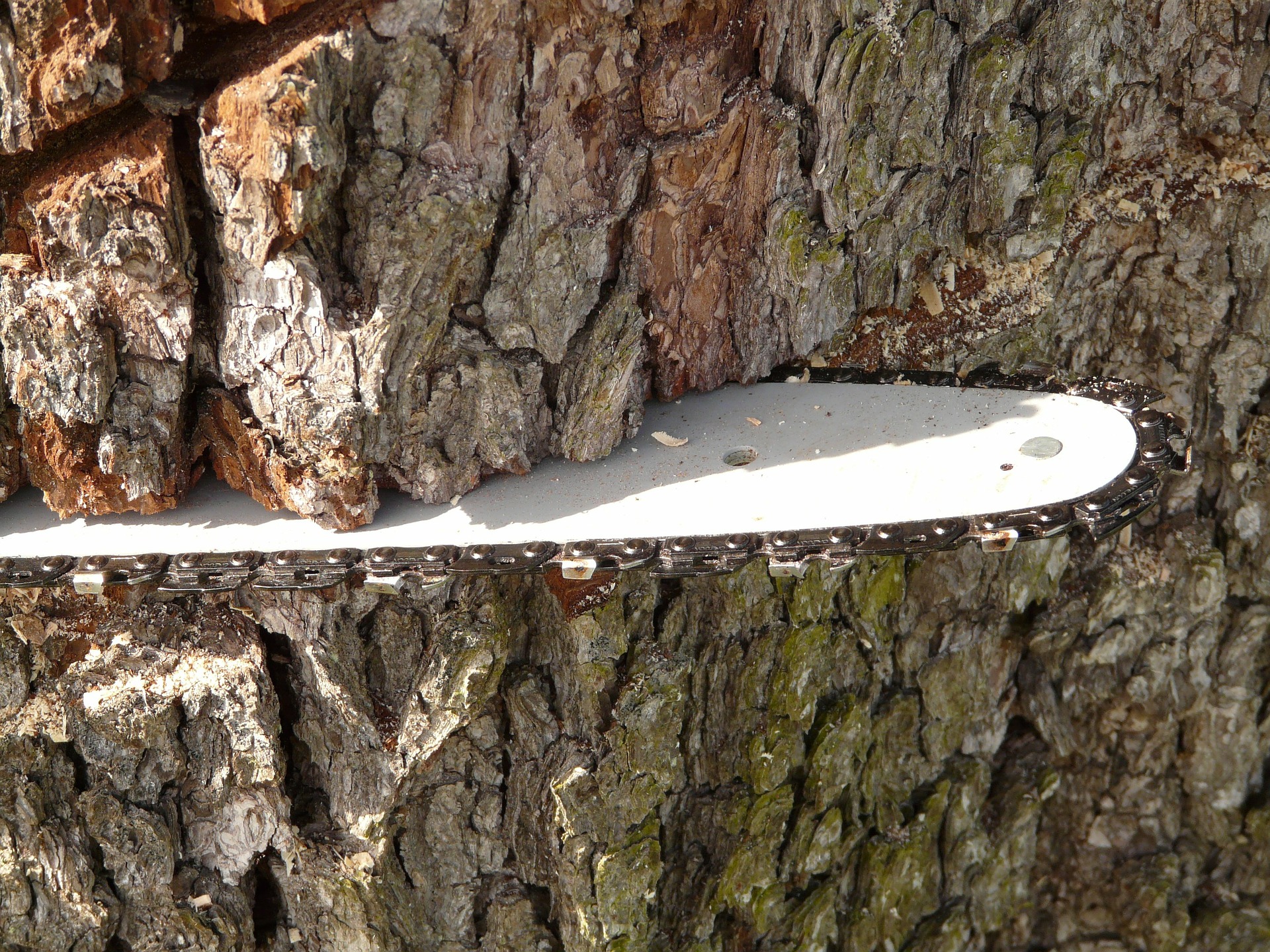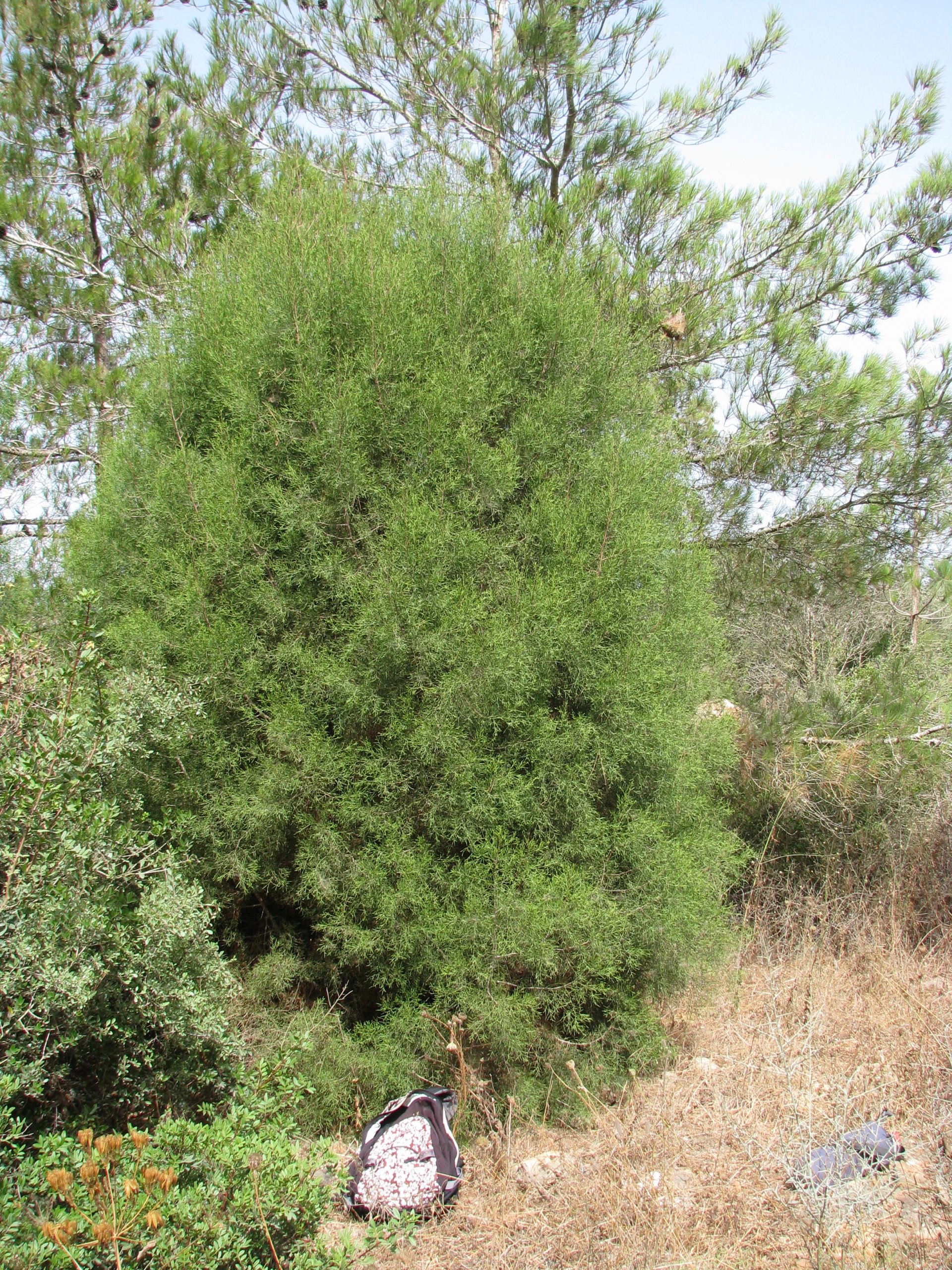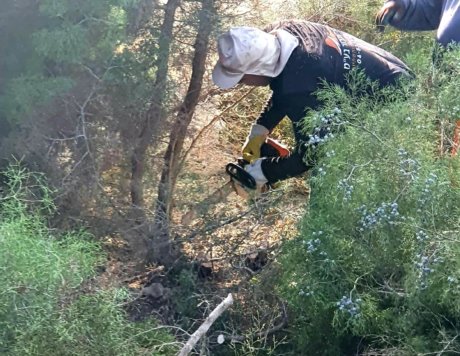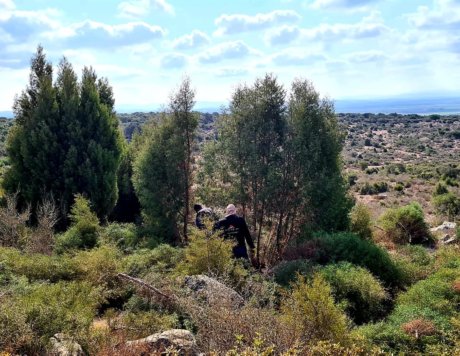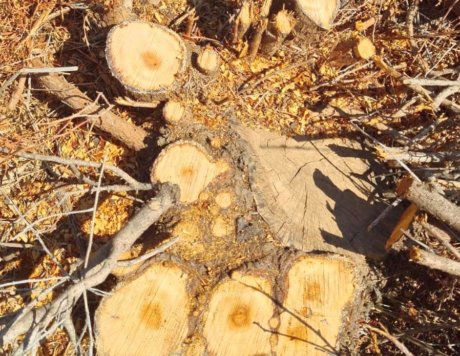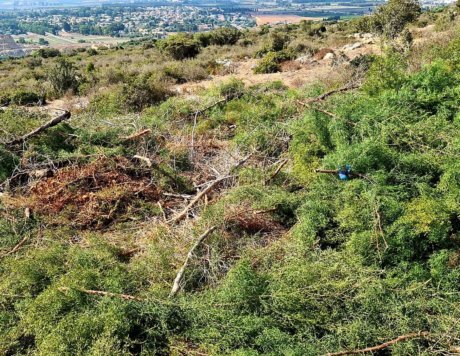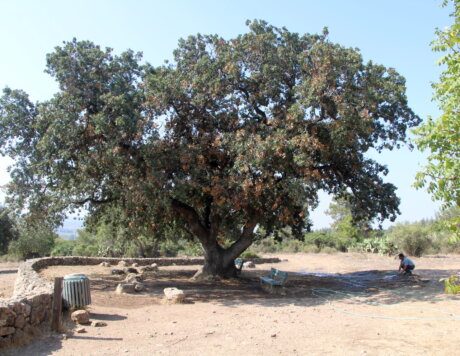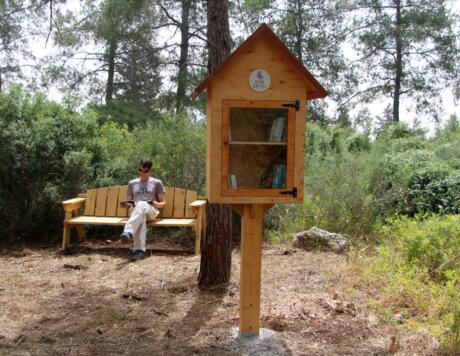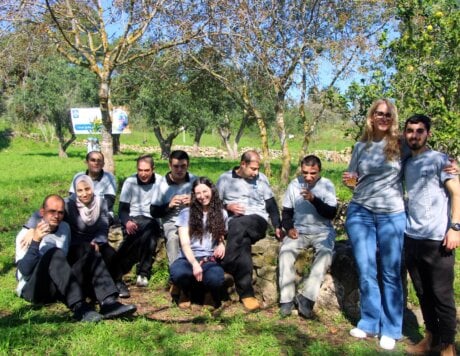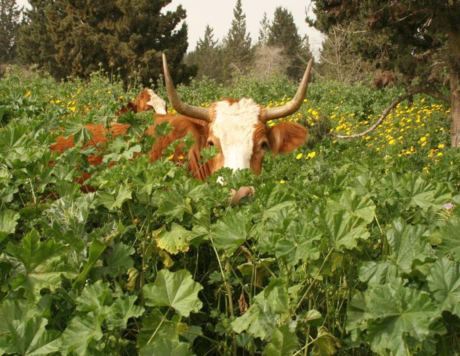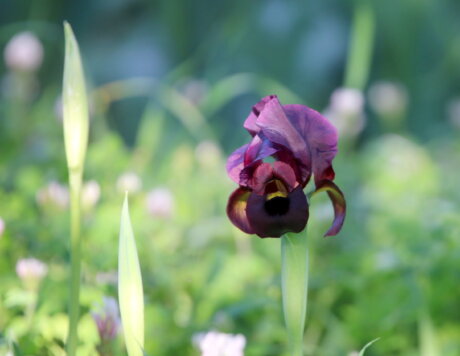What is an invasive species?
An invasive species is a species of foreign origin that is able to spread rapidly over large areas and become a threat to local species. In contrast to the Aleppo Pine presented in the introduction, which has attracted contradicting attitudes from the scientific community, particularly with respect to its contribution and definition in space, Tetraclinis presents a clear example of an invasive species.
This species, originating in Morocco, was planted at Ramat Hanadiv by Keren Kayemet Le’Israel many years ago. Over time, Tetraclinis established under the eyes and branches of the locals; after years of growth and establishment it began spreading throughout the area and threatened to change the face of the park. Its massive presence in the area led professionals at Ramat Hanadiv to initiate a research study to examine whether this species indeed behaves like an invasive species and understand how to treat it.
A three-year study produced clear results: Tetraclinis displays the traits of an invasive species; the impact on the landscape and natural environment as a result of its spread may be great, including a negative impact on local species and a threat to the regional ecological texture in a way that may be irreversible. Therefore, the unchallenged proposed solution is controlled, professional, and gradual cutting down of the Tetraclinis trees in the Nature Park.
It’s interesting to note that in Malta, for example, Tetraclinis is the national tree, and in Morocco it’s a local species that requires conservation, while in Israel it was recently defined as an invasive species whose spread must be regulated and whose planting must be stopped. For us at Ramat Hanadiv, this is an example of responsible, loving, but complex management of nature.


